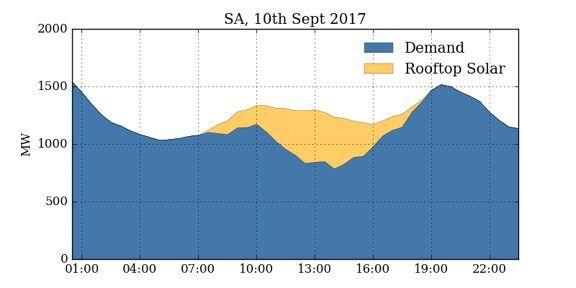South Australia’s high rooftop solar penetration has helped to deliver record low demand for the state over the weekend, hitting 786MW at around 2pm on Sunday.At the time, rooftop solar accounted for 36 per cent (445MW) of electricity demand in the state, generated by the 761MW of small-scale rooftop solar on homes and businesses in the state.
According to an AEMO analysis released in July, the previous record low of grid demand in South Australia occurred on November 6, 2016, with 800MW.
AEMO has predicted that by 2019, record low demand may fall to just 354MW, and within 10 years the grid demand may fall to zero because of the increasing amount of rooftop solar, particularly as South Australia has high grid prices, due to its historic legacy of an elongated network and the lack of competition in wholesale market.
“Minimum demand generally happens in summer,” it suggested. Not this time, though, because it occurred just 11 days after the end of winter.
Zibelman told a Melbourne public forum on “2017 energy sector strategic priorities” on Tuesday that she had “spent the weekend” watching the load curve in South Australia, “the lowest curve we’ve ever seen, because of all the solar.”
She used this to explain how the grid was changing because of these new technologies. “This is not a bad thing,” she said, but it required a different approach to the grid and improved management.
“It’s about managing demand more efficiently, using our resources better, to create a more efficient system.”
Compare Solar & Battery Quotes
